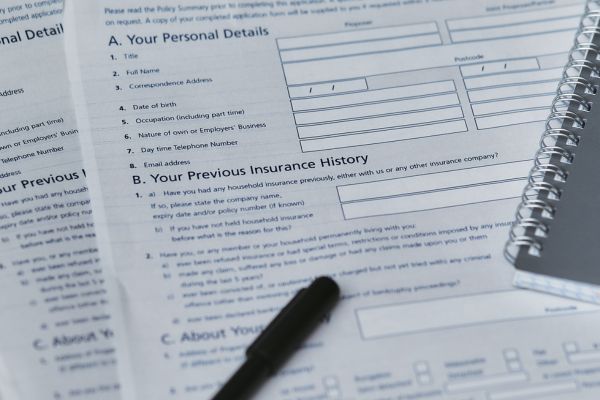USA Teen driver insurance
Obtaining a driver’s license marks a significant milestone for countless teenagers, symbolizing newfound freedom alongside the weighty responsibility of owning and operating a vehicle. Among the crucial aspects to consider for teen drivers, finding suitable insurance coverage stands out as paramount. This article delves into the realm of teen driver insurance, shedding light on its importance, coverage types, and factors influencing rates.
Understanding the Importance of Teen Driver Insurance
Teen drivers, statistically more prone to car accidents than their seasoned counterparts, often face the tag of being high-risk individuals in the eyes of insurance companies. Consequently, they encounter elevated insurance rates. However, securing appropriate insurance coverage not only mitigates financial risks but also ensures protection for both the driver and their vehicle in the event of an accident.
Exploring Types of Teen Driver Insurance
Teen drivers require various insurance coverages, including:
- Liability Insurance: Mandated in most states, it covers damages to third parties or their property in accident scenarios.
- Collision Insurance: Assists in covering repairs to the driver’s vehicle post-accident.
- Comprehensive Insurance: Offers coverage for damages arising from non-collision incidents like theft or natural disasters.
- Uninsured/Underinsured Motorist Coverage: Provides financial protection if the other driver involved lacks sufficient insurance coverage.
Factors Influencing Teen Driver Insurance Rates
Several factors influence insurance rates for teen drivers, such as age, driving record, type of vehicle owned, and geographic location.
Top Teen Driver Insurance Companies in the USA
Leading insurance providers catering to teen drivers include:
- State Farm: Offers a range of insurance options with discounts for good grades and safe driving.
- Geico: Known for its affordability and user-friendly mobile app for policy management.
- Nationwide: Provides discounts for academic achievements and offers safe driving programs.
- Allstate: Offers safe driving discounts and features a mobile app for tracking driving habits and earning rewards.
Understanding Basic Coverage Levels
Basic knowledge of coverage levels is crucial for determining the appropriate insurance level for teenage drivers:
- Liability Insurance: Covers damages to others when the driver is at fault, with varying minimum coverage levels across states.
- Collision Insurance: Protects the driver’s vehicle in collision scenarios, often required by lenders for financed vehicles.
- Comprehensive Insurance: Offers broader coverage for non-collision incidents like theft or environmental damage.
Conclusion
Navigating the intricacies of teen driver insurance requires a comprehensive understanding of coverage options and factors influencing rates. By partnering with reputable insurance providers sensitive to the unique needs of teen drivers, families can ensure robust protection on the road. Comparing coverage options diligently enables securing a tailored insurance policy meeting both needs and budget constraints.
Why Are Teens More Expensive To Insure?
Teenage drivers face higher insurance costs for several reasons. Insurance providers consider factors like age and driving experience when determining premiums, leading to elevated rates for younger, less experienced drivers.
This stems from data showing that younger, inexperienced drivers are more prone to serious accidents. In the United States, car crashes rank as the second leading cause of death among teens, according to the Centers for Disease Control and Prevention (CDC). The risk of crashes peaks during the initial months after teens obtain their driver’s licenses.
A report from the Insurance Institute for Highway Safety (IIHS) revealed that over 2,300 teens aged 13 to 19 were killed in motor vehicle crashes in 2019. The IIHS also highlighted that young males accounted for approximately two-thirds of teenage fatalities in car crashes. Additionally, per mile driven, teen drivers aged 16 to 19 exhibit crash rates nearly three times higher than drivers aged 20 and older, as per the IIHS.
While car insurance is not optional, it’s essential for teenage drivers to ensure their policies offer adequate financial protection. Considering that teens are more likely to be involved in crashes, increasing coverage limits can be prudent.
Purchasing sufficient liability coverage is crucial to avoid being underinsured. State-required minimums may not provide adequate protection against lawsuits or cover all accident expenses. For instance, if a state mandates $50,000 in bodily injury coverage per accident, but a driver causes $70,000 in medical bills, they would be responsible for the remaining balance. Depending on one’s assets, increasing coverage to $100,000 or more can offer greater peace of mind regarding teen driving habits.
Accident forgiveness is another aspect worth considering. This feature maintains the insurance rate after the first at-fault accident on the policy. While availability varies among insurers, it can potentially save money if a young driver experiences an at-fault accident.
Moreover, if a car is still under financing, maintaining comprehensive coverage and collision insurance is typically necessary until the loan is paid off, regardless of the driver.
To save on auto insurance for teens, exploring options such as staying on a parent’s policy, seeking discounts, and choosing a higher deductible can be beneficial. Having a discussion about policy costs with the teen presents an opportunity to reinforce good driving habits while comparing quotes to secure the best rate.
In conclusion, selecting the right insurance coverage is crucial for teen drivers and their families. Partnering with a reputable insurer attuned to the unique needs of teen drivers ensures proper protection on the road. Comparing coverage options and rates from different insurers enables finding a policy that aligns with both needs and budget.






